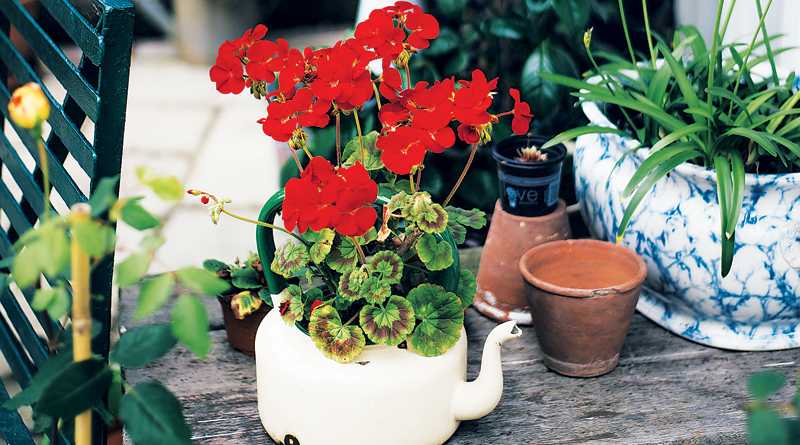FINDING THE RIGHT PLANT CONTAINER – Green-Thumb Gardener

Containers for plants have continued to grow in both choices available and interest shown in them by consumers. They play a very important role in the health of the plant(s) in them as well as becoming a décor accessory for inside or outside your home.
The two most critical items to consider in choosing your pot are drainage and size. Drainage is absolutely critical to the long-term health of the plant. Choose a container with as many drainage holes as possible to let water out and air into the root area. If your favorite container does not have drainage you can consider “double-potting”, or keeping the plant in a cheap grower’s pot that fits well in the decorative pot. Slip this pot into the decorative pot and then either take it out to water and drain or water thoroughly and then drain out the excess water. People often talk about putting stone in the bottom of drainless pots to promote drainage. The reality is that roots eventually grow into the stone which typically is holding water and the excess water down there can grow stagnant and promote disease.
In choosing pot size, generally you want to choose a pot the same size as the one it is currently in. IF it is splitting the pot it is in, lifting itself out of the pot, or shooting roots aggressively out the bottom it is time to up-pot.
Generally, choose a pot 1 to 2” larger in diameter when doing this. If it is an extremely aggressive grower, then consider a pot 2 to 4” larger. We find that customers often tend to up-pot too frequently.
Another factor in choosing pot size is the look of the plant in the pot or its balance. A general rule of thumb is to not have the plant more than twice the pot height or 1.5 times the width.
Some of the common materials used in containers are: wood, metal, concrete, plastic, resin, glazed ceramic, terra cotta clay, and fiberglass. Each of them has its strengths and weaknesses. Keep in mind that any of these materials are not usually recommended for outdoor use in the winter due to potential cracking from freezing and thawing. Either take out the soil for the winter or let it dry thoroughly and then cover with a well-fitting tarp if it is too heavy to move. Consider characteristics such as air breathability, weight, temperature transfer in outdoor pots, and how prone the pot is to breakage in making your selections. Your local independent garden centers will be happy to help you in choosing the best option.
This article is sponsored by McNamara at Sand Point, which has 2 acres of production greenhouses, retail florist and gift shop, as well as retail garden center and wholesale plant business. Contact McNamara by calling 260-747-4131 or visit 4322 DeForest Ave, Ft. Wayne, IN 46809.
- Celebrating 20 Years Of Community At The Stand - April 12, 2024
- First Positive Case Of Chronic Wasting Disease In Indiana - April 12, 2024
- Southwest Allen County Schools Embark On Major Tree Plantings - April 12, 2024


